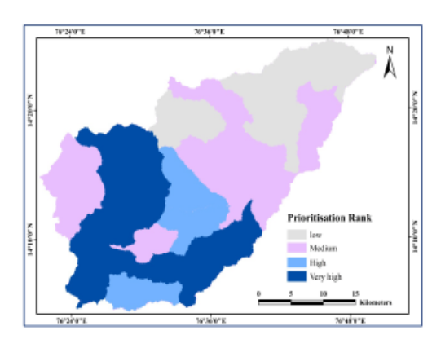
Geo-Eye
Department of Geography & GIS

Department of Geography & GIS

Geo-Eye
Year: 2023, Volume: 12, Issue: 1, Pages: 1-11
Original Article
K Ibrahim-Bathis1*, Ashfaq Syed Ahmed2, V Nischitha3
1Kerala State Council for Science, Technology and Environment, Thiruvananthapuram, Kerala, India
2Department of Applied Geology, Kuvempu University, Shivamogga, Karnataka, India
3Department of Geography and Geoinformatics, Bangalore University, Bangalore, Karnataka, India
*Corresponding Author
Email: [email protected]
Received Date:08 February 2023, Accepted Date:18 May 2023
Innovative watershed management is intense to unravelling watershed related problems on a sustainable manner. Planning and managing developmental practices in the watershed on a sustainable basis usually integrate water or land and both in the present in such a way to attain its goal in the future also. The water-related problems in rain-fed agriculture are often related to high intensity and short duration rainfall, with large spatial and temporal variability, rather than to the low cumulative amount of rainfall. For the innovative planning and Management in the watershed, analysing land degradation through the prioritisation watersheds, assessing the surface runoff, evaluating the Spatio-temporal distribution of the hydrological constraints, groundwater potential zone delineations and the suitable sites for the Rainwater Harvesting (RWH) are considered by spatial multi-criteria evaluation from the several thematic layers that are determined from the remote sensing and GIS technologies. These innovative spatial technologies contribute to reducing vulnerability to climate change and help minimise or even reverse land degradation. The sustainable RWH will improve the surface and ground water level, this in turn improve the economy of the watershed.
Keywords: Geospatial, Innovations, Watershed, Rainfed agriculture, Prioritisation, Groundwater
© 2023 Ibrahim-Bathis et al. This is an open-access article distributed under the terms of the Creative Commons Attribution License, which permits unrestricted use, distribution, and reproduction in any medium, provided the original author and source are credited.
Published By Bangalore University, Bengaluru, Karnataka
Subscribe now for latest articles and news.